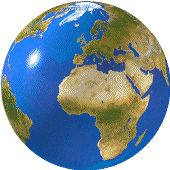“A SEARCH FOR STRUCTURE”: CYRIL STANLEY SMITH BOOK
August 10, 2010 at 1:59 am | Posted in Art, Books, Development, Globalization, History, Research, Science & Technology | Leave a commentA Search for Structure:
Selected Essays on Science Art and History
Cyril Stanley Smith (Author)
Editorial Reviews
Review
“In most of these essays Smith tries to stay as far away from the laboratory as possible, the better to reveal in the development of science and technology their historical debt to artists and artisans. He delights in the nodes at which disparate human enterprises meet…. Out of this holistic bent, which wends through the history and philosophy of science, the history of technology, art history, and aesthetics, comes no one over-arching dictum but rather a rich tribute to structural affinities.”
– Harpers
Product Description
“As an old admirer of Cyril Smith, I’m delighted to learn that a collection of his essays on the arts will be published. They are a unique body of work which only he could have produced.”
—Meyer Schapiro
Science, art, and history all share common or analogous patterns of hierarchical order that are embedded into the structure of the material world as well. This is a central insight of these essays by a generalist who has also spent a lifetime working in his specialty, the nature of materials. To Cyril Stanley Smith, the transformation of metals from one state to another, or the contrasts at one level that merge through repetition into uniformity at a higher level, carries solid metaphorical implications for the human condition.
Cyril Stanley Smith’s own expansion of outlook to encompass successively technology, science, history, and art is loosely implicit in the chronological ordering of the fourteen essays included in this volume and explicitly developed in one of them that “comes as close to an autobiography as I am ever likely to write” and traces the evolution of Smith’s ideas on science and art.
Trained as an industrial metallurgist, Smith turned to the purely scientific study of the structure of metals and alloys after his experience at Los Alamos during World War II, drawn in part by his delight in the intrinsic beauty of these structural manifestations of symmetry and natural design. A growing interest in the history of the science and technology of materials led him to consult the artifactual evidence—the art objects in museums that either greatly predate written historical records or provide, through scientific examination, more reliable information than do the surviving documents of their period. This direct contact with fine or formal art only reinforced Smith’s intuition that the aesthetic impulse is at play over the full range of human activity, whether it leads to the making of a bronze sculpture, a scientific theory, or a social reorganization. A variety of investigations of art objects is cited in the text, and the author regards the accompanying illustrations to be as important as the text.
In particular, the essays make the case that historically many advances and discoveries regarding metals and ceramics came about through aesthetic curiosity and the desire to improve works of fine and decorative art, rather than through scientific investigation or in response to the need for products having practical utility. Many techniques and even whole industries, Smith writes, began with the making and reproduction of art works.
Other essays deal with the emerging understanding of the remarkable properties of steel, the positive uses of corrosion, ancient casting and molding techniques, and the connection between attempts to reproduce oriental porcelain in Europe and modern geological ideas. Still others are more philosophical in approach.
Product Details:
· Paperback: 424 pages
· Publisher: The MIT Press
· March 29 1983
· Language: English
· ISBN-10: 0262690829
The Beginning of the Use of Metals and Alloys
Robert Maddin (Editor)
Cyril Stanley Smith (Foreword)
Editorial Reviews
Product Description
These thirty original essays form a landmark contribution to the history of metallurgy: together they present the first systematic survey of the beginning of the use of metals and alloys throughout the world. What distinguishes the book as a whole is the orientation of the writers toward seeing the objects they uncover in human-historical terms, reminding us that at all stages in history and in every part of the world, cultural change and advances in the use of metals are often closely intertwined. The articles are arranged in roughly chronological-geographical order; some are specific studies of sites, objects, and processes; others examine more general aspects of archaeometallurgy within a general field that has come to be called “archaeometry”; and still others are interpretive and reflective essays on human history and cultural change (a particularly fine example of this approach is Heather Lechtman’s essay on Central Andean metalworking). Archaeologists, historians, metallurgists, chemists, and geologists cover topics as diverse as iron trade in northern Scandinavia, the fabrication of gold foil in Japan, copper mining in eastern India, prehistoric metallurgy in Thailand, iron bloomery in Africa, early copper smelting in Palestine, and Chinese techniques for casting old belt plaques. And in his Foreword, Cyril Stanley Smith proposes structural metaphors that describe the historical reworkings of human society in terms of the transformations of materials. Robert Maddin is Honorary Curator of Archaeological Sciences, Peabody Museum of Archaeology and Ethnology, Harvard University. The Beginning of the Use of Metals and Alloys was derived from the second international conference on the subject, held in Zhengzhou, China in 1986.
Product Details:
· Hardcover: 408 pages
· Publisher: The MIT Press
· August 30 1988
· Language: English
· ISBN-10: 026213232X
· ISBN-13: 978-0262132329
From Art to Science: Seventy-Two Objects
Illustrating the Nature of Discovery
Cyril Stanley Smith (Author)
Editorial Reviews
Product Description
This catalog is based on the exhibit, “Aspects of Art and Science,” held at the Smithsonian Institution’s National Museum of History and Technology and MIT’s Compton Gallery in the summer and fall of 1978. It illustrates and discusses 72 objects and rare books from museums and private collections in the United States and Great Britain.
These include art masterpieces, workaday objects, pieces associated with major scientific figures and long-extinct cultures—all manifesting the themes of Cyril Stanley Smith’s research into the relationships among art, science, and technology. Smith, a distinguished metallurgist and historian of technology, now professor emeritus at MIT, has argued persuasively that time and again, the artist and artisan have discovered and exploited subtle properties of matter prior to their use in “serious” technology and long before they attracted scientific attention.
Students of science and technology, art historians, and interested readers will enjoy the lavish illustrations, many in full color, of beautiful and historically significant vases, swords, beads, medallions, stamps, illuminated manuscripts, crystals, and much more. In addition, the text provides a store of information showing how the decorative arts, especially ceramics and metals, have contributed to scientists’ understanding of the structure and properties of matter.
Product Details:
· Hardcover: 104 pages
· Publisher: The MIT Press
· November 12 1980
· Language: English
· ISBN-10: 0262191814
· ISBN-13: 978-0262191814
A Search for Structure (Hardcover)
Cyril Stanley Smith (Author)
Product Details:
· Hardcover: 416 pages
· Publisher: MIT Press First Edition
· September 1981
· Language: English
· ISBN-10: 0262191911
· ISBN-13: 978-0262191913
A Search for Structure:
Selected Essays on Science Art and History
Cyril Stanley Smith (Author)










